Nagra VPS
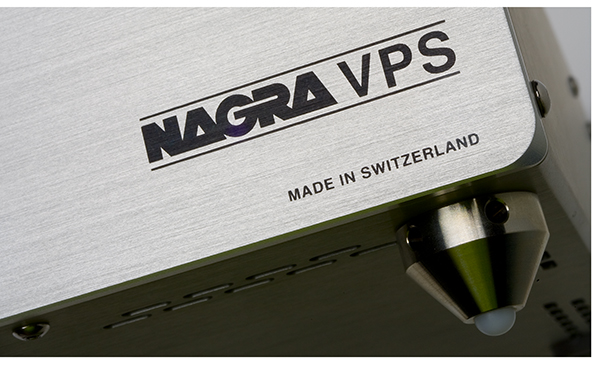
While you might be overloaded with phonostage choices at the entry level, finding one at the top of the heap is still a fairly narrow path. Even as you approach the pinnacle, you still must choose wisely and as always, define just what you are looking for, keeping system synergy at the forefront.
One of the biggest questions is always to go with tubes or solid state? I often agonize over this, and the ultimate tonality that the VPS possesses sways me back on the valve side of the fence. The goal is always to get that extra bit of bloom tubes seem to provide, yet without the inconvenience that often comes with tubes.
A Nagra through and through
For those of you not familiar with the sound (or lack of it) of Nagra gear, it is some of the most neutral equipment I’ve experienced. The PSA power amplifier leans slightly towards the analytical side of solid state/neutral, while the PL-L linestage we auditioned has just the slightest bit of “tubeyness” that gives it a tonal richness that won’t be mistaken for solid state, yet is not overly romantic or colored. It is a perfect match for Nagra’s PSA and PMA amplifiers. From the minute the VPS was powered up, it was obvious that it had an extremely similar tonal character to that of the PL-L.
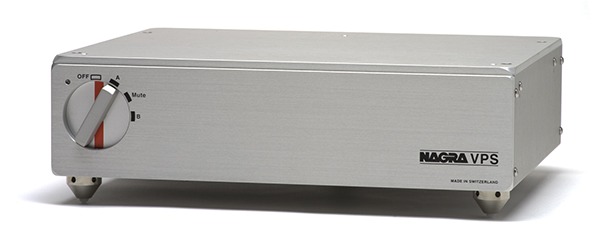 The VPS has a small enclosure similar to the PL-L linestage (and identical in footprint), without the big meter on the front. It merely has a standard Nagra rotary switch with three positions; A, B and mute. Yes, the VPS has two inputs folks, and that what catapults it straight to the top of my list. I have too many turntables to live with a single input phono preamplifier.
The VPS has a small enclosure similar to the PL-L linestage (and identical in footprint), without the big meter on the front. It merely has a standard Nagra rotary switch with three positions; A, B and mute. Yes, the VPS has two inputs folks, and that what catapults it straight to the top of my list. I have too many turntables to live with a single input phono preamplifier.
You can purchase the base VPS configuration for $5995 with one MC input. An additional MC card is $1495, while a MM card is only $395. The review sample came with MC and MM cards installed, a perfect combination for my reference Raven Two table with its Dynavector XV-1s and the Clearaudio Virtuoso Wood, both mounted on SME tonearms.
Extreme versatility
The VPS is easy to integrate into your system. The rear panel has a pair of RCA inputs and one pair of RCA outputs, along with a grounding post. There is also a pair of XLR’s, but this is not a fully balanced device, so there is no major advantage to using the balanced outputs. An umbilical cord goes from the VPS to the same ACPS II power supply that powers the Nagra PL-L linestage or their CDP CD player.
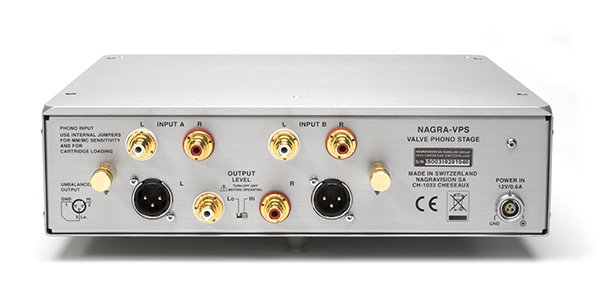 Each of the inputs on the VPS can be configured for MM or MC cartridges, utilizing different cards to achieve the proper amount of gain. The VPS can actually be a hybrid phono stage, with an additional solid state gain stage that you can switch in via the back panel. Those with line stages in the 12-20 db range should be able to use the tube section without additional gain. It offers 34 dB of gain and a maximum output of about 0.3V. The CJ Act 2/series 2 has 21.5db of gain, allowing the VPS to shine in tube mode.
Each of the inputs on the VPS can be configured for MM or MC cartridges, utilizing different cards to achieve the proper amount of gain. The VPS can actually be a hybrid phono stage, with an additional solid state gain stage that you can switch in via the back panel. Those with line stages in the 12-20 db range should be able to use the tube section without additional gain. It offers 34 dB of gain and a maximum output of about 0.3V. The CJ Act 2/series 2 has 21.5db of gain, allowing the VPS to shine in tube mode.
The MC board uses a pair of very high quality transformers provide 11 dB of gain to bump the gain of the VPS to 45 dB with tube outputs and 60dB using tube and solid-state buffer. Using MC cartridges from .23mv output up to .7mv, proved no problem. Cartridge loading is adjusted by setting different jumpers on the MC card. There is another set of jumpers that come from the factory to accommodate the standard RIAA phono EQ curve. The VPS can also be set to the 1976 IEC curve, which rolls off slightly below 50hz. Most of you with high performance turntables will not need this, but chalk it up to Swiss attention to detail that they include it. Even if you never need or use this feature, it’s nice to know they are there. Another part of the Nagra experience that I enjoy.
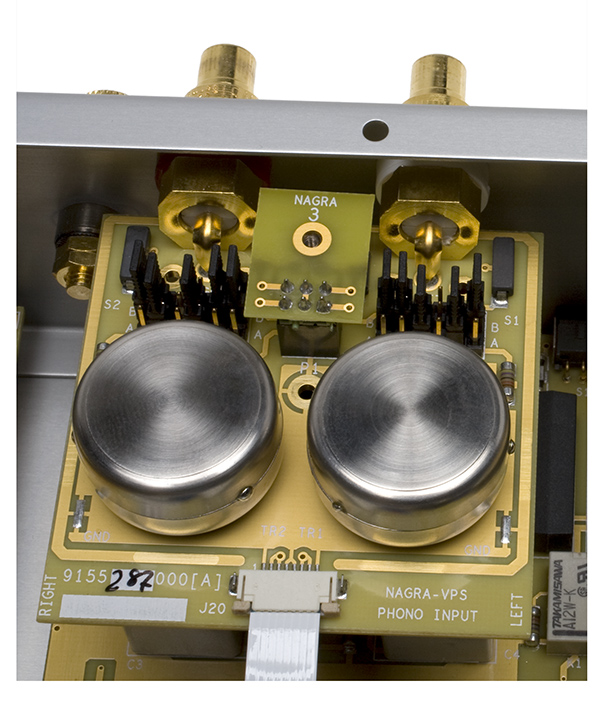 Those changing cartridge loading often, will might grump at having to take the cover off the VPS and use the supplied pliers to set the tiny jumpers that are similar to those on a hard drive. Fortunately, my three reference MC cartridges all work well at 100 ohms, so I was able to set the VPS and forget about it. I must admit the remote controlled loading of the ARC PH7 is pretty enticing, but for me, the two inputs far outweigh the remote. With analog, I’ll always forgo a little bit of convenience for performance when forced to make a choice.
Those changing cartridge loading often, will might grump at having to take the cover off the VPS and use the supplied pliers to set the tiny jumpers that are similar to those on a hard drive. Fortunately, my three reference MC cartridges all work well at 100 ohms, so I was able to set the VPS and forget about it. I must admit the remote controlled loading of the ARC PH7 is pretty enticing, but for me, the two inputs far outweigh the remote. With analog, I’ll always forgo a little bit of convenience for performance when forced to make a choice.
As I mentioned earlier, the VPS is a perfect match for an all Nagra system, but it integrated into six other system combinations (tube and solid state, balanced and unbalanced), so I do not predict any synergy issues. I also begrudgingly let a couple of other staff members try the VPS, but only for a very short time!
Transistors: in or out?
While the Nagra engineers have done an exceptional job to make the transition from all tube to hybrid phono stage undetectable, there is still a slight difference between the two, which I actually enjoyed. Leaving the solid stage gain stage out of the circuit provided slightly more warmth, which worked incredibly well with the MoFi 3.5C cartridge, the Lyra Argo i and the Sumiko Blackbird.
Switching the transistors in offers a touch more slam and punch in the lower register, which suits the Dynavector XV-1s, Lyra Olympos and Grado Statement cartridges. In either setting, the VPS was extremely quiet and I’m sure the attention to circuit layout and only two tubes inside the box helps tremendously.
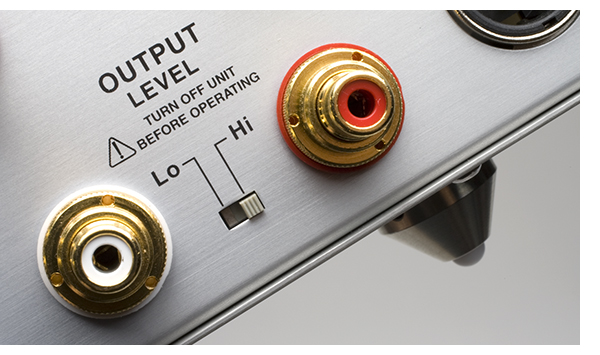 For those of you in the audience that love to roll tubes, don’t bother. Trying a few different NOS tubes in both positions reveals no improvement over the hand picked EH tubes Nagra supplies with the VPS. Megabuck NOS Telefunkens prove warmer, but at the expense of resolution. A few other choices yield the same results – a difference in one area comes at the expense of something elsewhere. The stock tubes cost peanuts to replace and will last 5-10 thousand hours. This also saves you the quest for another magical set of NOS tubes in a few years.
For those of you in the audience that love to roll tubes, don’t bother. Trying a few different NOS tubes in both positions reveals no improvement over the hand picked EH tubes Nagra supplies with the VPS. Megabuck NOS Telefunkens prove warmer, but at the expense of resolution. A few other choices yield the same results – a difference in one area comes at the expense of something elsewhere. The stock tubes cost peanuts to replace and will last 5-10 thousand hours. This also saves you the quest for another magical set of NOS tubes in a few years.
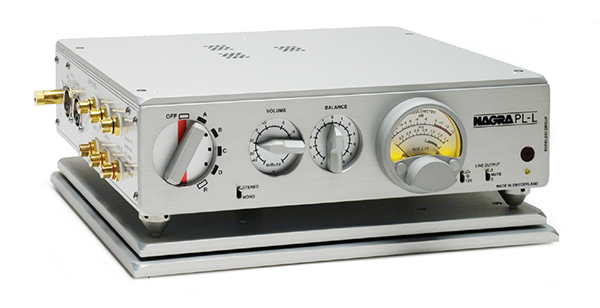 An upgrade that you do want to invest in
An upgrade that you do want to invest in
The one upgrade that is worthwhile is the Nagra VFS (vibration free support) platform that is built to go underneath the VPS (or any Nagra preamp or CD player). Considering what some of those Telefunkens sell for these days, think of this $1,495 platform (and included spike kit that is available seperately for $349) as the cost of about four unobtanium 12AX7’s that you never have to replace.
The VFS makes a substantial upgrade in all dimensions and is not an improvement you will need to strain to hear. The already taut and tuneful bass becomes tighter, dynamics improve and the sound stage appears wider, as if I had moved my speakers about another foot or two apart. The VFS also makes it easier to hear the difference between the SS and hybrid modes.
The proof is in the listening
The VPS engages without being overly lush or exaggerated and should serve you very well no matter what kind of music you enjoy. I noticed the VPS’ low noise floor instantly, on both MM and MC inputs, in either tube or hybrid mod, with little increase in noise going strictly valve. The VPS has that inky black feeling by which music just rises up from the background without the intrusion of noise artifacts.
Many high performance components excel in one area or another, while falling flat in others, yet we accept them for their brilliance. The VPS excels in low level detail retrieval, tonal accuracy and transparency equally well without weakness. It also offers plenty of weight in the lower registers with a three dimensional picture that big, yet realistic, without being overblown. The VPS is not a phono stage favoring only pristine recordings. I can offer a list of award winning pressings that sound fantastic via the VPS, perhaps one of the most impressive was the Classic Records release of Sibelius’ Concerto in D minor, Op. 47 for Violin and Orchestra. This quick test of tonality and dynamics will put the pretenders in the dirt. You can’t fake that kind of realism, and any good violin recording is a great tonality torture test for any system, one the VPS easily passes. Yet the true beauty of the VPS is its ability to hear further into average pressings that you are infinitely familiar with. BTO’s Not Fragile never sounded so good.
The VPS allowed me to hear a lot further into some average pressings that I’ve heard hundreds of times over the years and some new favorites that are only so-so. This is the true beauty of this preamp for the hard-core listener, because I’m betting that many of you don’t have all stellar pressings in your collection.
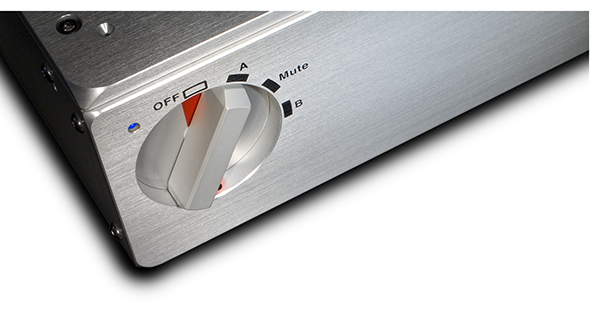 Works well with MM and MC
Works well with MM and MC
The VPS worked flawlessly with the eight cartridges at my disposal – and I particularly enjoyed the flexibility of two inputs, one MM and one MC. When not squarely in the sweet spot, or auditioning used purchases, I really like to give them a spin on the Clearaudio Virtuoso Wood first, to make sure the record cleaner hasn’t missed anything. Again, for those less than perfect 70’s rock recordings and some of today’s music that has been produced in more of a low budget situation, the combination of the Clear cartridge and the VPS proves a fantastic combination, offering a ton of musicality and extra warmth that helps IDA just as much as it does Bruce Springsteen.
Switching to input B and the Dynavector XV-1s made for some of the most enjoyable analog I’ve had the pleasure to listen to. Those with a world-class analog front end, rest assured it is up to the task. With a little time left on the clock auditioning the Continuum Criterion, the Raven Two and the SG-2 from Spiral Groove all here at the same time, it was a couple weeks of turntable nirvana! The VPS had more than enough detail and extension to easily distinguish the character of each of these great tables.
The only option I could not explore with the VPS with was a fairly high output MM cartridge. The Virtuoso Wood only has an output of 2.7mv and all of my MC cartridges fell in between the .23 – .6 mv range, so nothing at my disposal pushed it anywhere near distortion or compression.
In the end, an extremely musical device
The key to the VPS is nuance balanced with power. It reveals all of the subtle details that will make your record collection come alive, yet is not the least bit fussy. If you don’t have two turntables, when you purchase the VPS, I guarantee that you will have a second one before long – it’s just too easy not to have two turntables with this phonostage.
While there are a few phonostages offering even more performance, they are priced accordingly. The Nagra VPS’ combination of audio performance, understated elegance and ease of use puts it at the top of my list. I highly suggest adding the VFS while you are at it! – Jeff Dorgay
The Nagra VPS Phono Preamplifier
MSRP: $5995-7490, depending on configuration
Manufacturers Information
Peripherals:
Turntables Rega P9 w/RB1000 arm, Oracle Delphi V w/SME 309 arm, TK Acustic Raven Two w/SME iV.Vi arm
and SME 309 arm, Spiral Groove SG-2 table w/TriPlanar arm
Cartridges Lyra Olympos, Lyra Skala, Lyra Argo-i, MoFi 3.5C, Dynavector
XV-1s, Dynavector 17D3, Clearaudio Maestro Wood, Grado Statement



